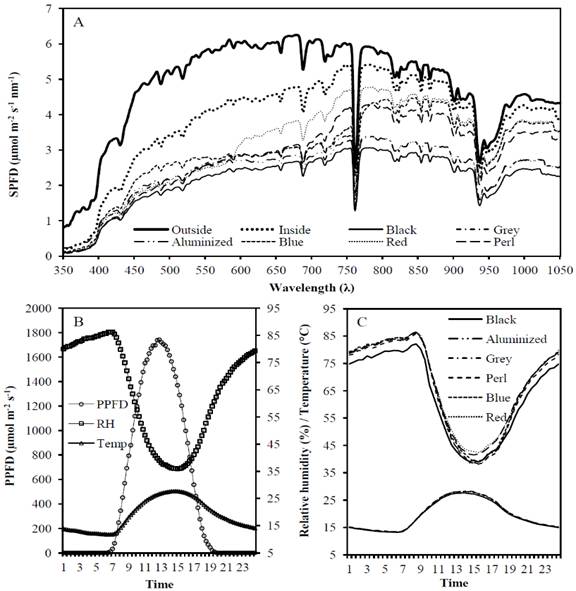ABSTRACT:
Black shading nets are widely used in the protected cultivation of vegetables as a technique for controlling light and temperature, while the colored shading nets, with special optical properties to improve the use of solar radiation, appeared recently in the agricultural plastics market. Light quality transmitted by gray, aluminized, pearl, blue, red and black (control) nets with 30% shade was evaluated, as well as its effects on photosynthetic properties and fruits production of cucumber plants. Treatments (shade nets) were established under a randomized complete block design with four repetitions. The red net transmitted 23.7 and 40.3% more photosynthetic photon flux density (400 to 700nm) and red light (600 to 700nm) and the blue net transmitted 36% more blue light (400 to 500nm) in comparison with the respective transmissions of black net. All nets increased the photosynthetic responses: transpiration, stomatal conductance and CO2 assimilation, observed in plants grown under black net. Leaf greenness (41.6 SPAD units) and foliar area (90dm2) increased 22.8 and 38.9% with the red net, while the dry weight of leaf (52.5g) increased 21.9% with pearl net. Pearl, red, aluminized and blue nets showed to be viable alternatives because the production of fruit increased in 71, 48, 46 and 46%, respectively, in comparison with the conventional black net (52t ha-1).
Key words:
Cucumis sativus L.; light transmission; photosynthetic responses; leaf growth; fruit production.

 Thumbnail
Thumbnail
